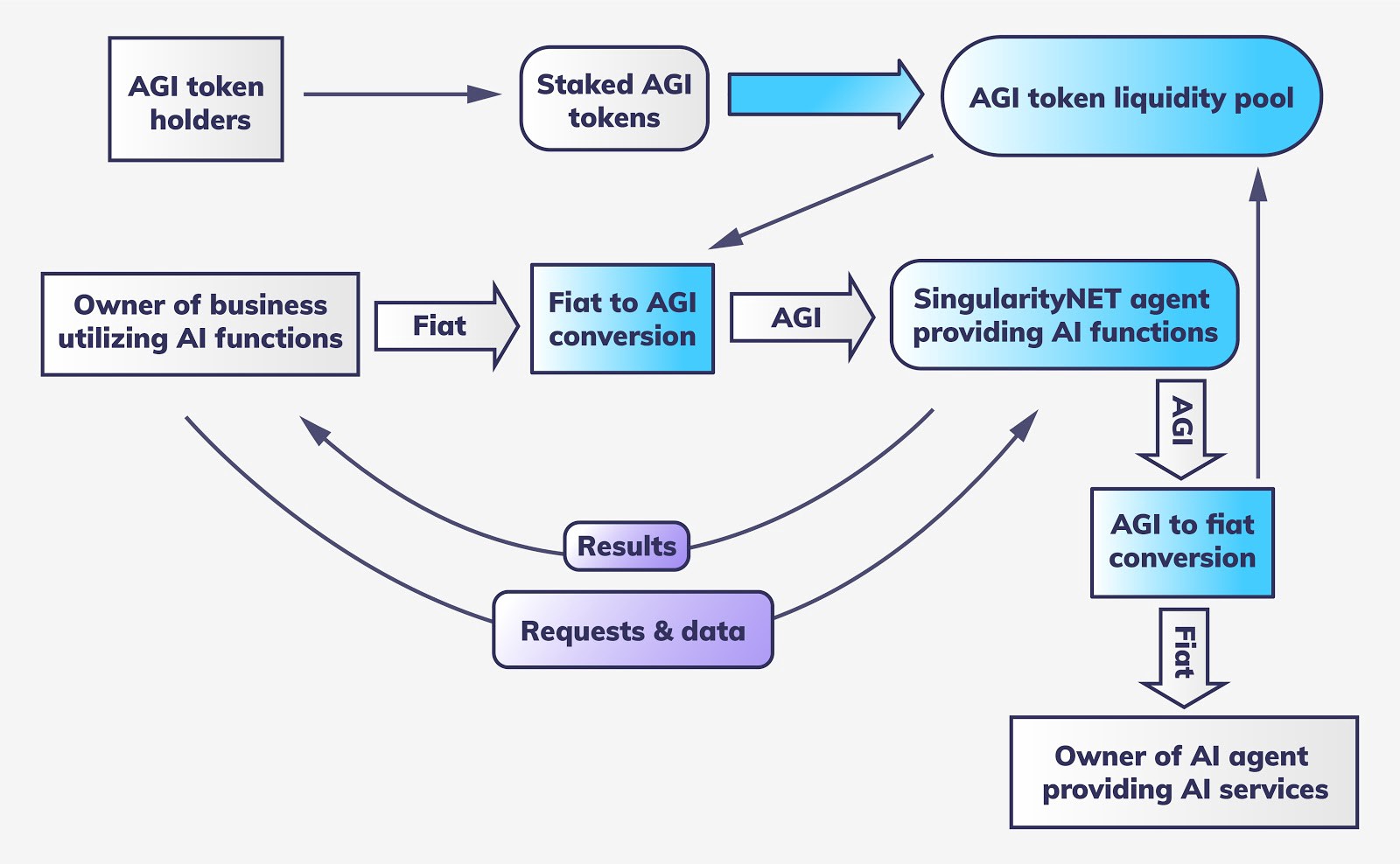Explore
expand_moreOverview
Staking is the process of holding AGIX tokens for rewards to support the operations of AI marketplace. It is an elegant way of securing an additional pool of AGIX tokens usable for mediating the exchanges of AGIX tokens to fiat as needed.
The Fiat-Crypto Gateway
The role of staking in the SingularityNET platform ecosystem is closely tied to the fiat-crypto gateway — a collection of software processes that together allow users the option to interact with AI providers and other users on the SingularityNET platform using entirely fiat currency rather than AGIX tokens.
Even with a full fiat-crypto gateway in place, all value exchanged between AI services and their users on SingularityNET will take place using AGIX tokens on the back end. Designing the gateway in such a way allows the SingularityNET platform to provide the convenience of fiat currency to its users and additionally permits the gateway to co-exist with the unique economic logic of the AGIX token, which is key to the philosophy and operation of the SingularityNET network
The first half of the fiat-crypto gateway — automated fiat-to-AGIX conversion for platform usage — is already in place, at least in initial form. A PayPal interface to the platform has been constructed, which allows users to purchase AI services from providers using their PayPal wallets. As PayPal wallets are easily filled using fiat currency, this interface allows for payment using fiat for service users on the platform.
The second half of the fiat-crypto gateway (yet to be built) will enable AI service providers to automatically convert the AGIX tokens they earn on the platform into fiat. B
Why the AGIX Token Needs Staking
To make the fiat-crypto gateway work on the back end requires the operator of the gateway (i.e. SingularityNET Foundation or some entity it nominates) to engage in continual exchanges of fiat currency for AGIX tokens. When a user pays for an AI service in fiat, this fiat then needs to be turned into AGIX to pay the AI agent. Further, when a service provider requests payment in fiat for access to their AI agent, the AGIX that these agents have received as payment need to be turned into fiat.
Doing all these exchanges, in practice, requires a “liquidity pool” of AGIX tokens that can be provided in exchange for fiat as needed. The operator of the fiat-to-AGIX and AGIX-to-fiat exchanges need to have some AGIX tokens and some fiat currency on hand so that when someone needs to change AGIX for fiat, it has the fiat; and vice-versa when someone needs to change fiat for AGIX, it has the AGIX.

Staking is an elegant way of securing an additional pool of AGIX tokens usable for mediating the exchanges this gateway requires.
When an AGIX token holder stakes their tokens, this means they are agreeing to “lock-up” and not use their tokens for a period of time. They are temporarily handing over their tokens to the Foundation to manage the staking process — until the lock-up period expires, and they can request the tokens back. These staked tokens are then part of the pool that can be used to mediate the fiat-to-AGIX exchanges required on the back end of the fiat-crypto gateway.
In exchange for providing their tokens to be used in this way, the AGIX token holder who has staked their tokens is provided with a certain number of bonus AGIX tokens, similarly to fiat depositors earning interest.
Last modified on : 15-Oct-24